#Cyana meyricki
Photo



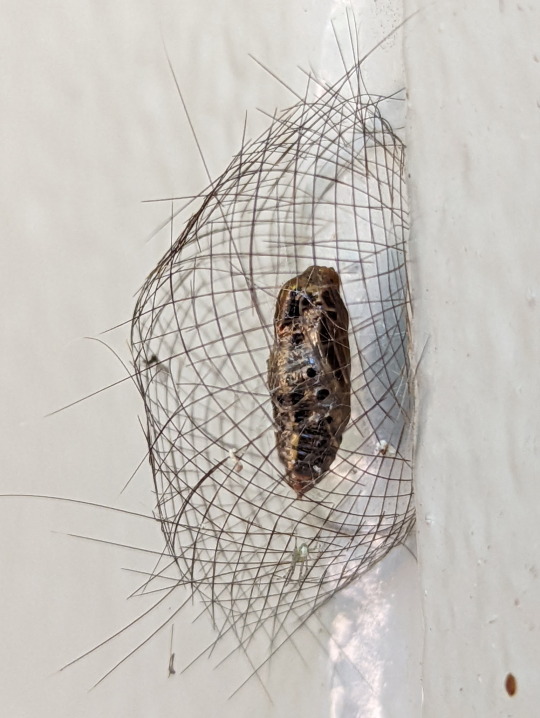
Cocoon Creation of Cyana Moths
This lichen-feeding genus of moths have a very strange looking cocoon.
The cocoon is made with the larva’s setae (hair-like structures), with the pupa being suspended in the centre of the cocoon with silk.
These cocoons can be found across Southeast Asia (Hawes 2016), however they can also be found in parts of Australia, with Cyana meyricki being a common species here.
Cyana meyricki
Source and further reading
06/07/22
#Cyana meyricki#Cyana#Lithosiini#Lichen Moths#Arctiinae#Noctuoidea#Lepidoptera#larvae#larva#larval stage#caterpillar#caterpillars#Lepidopterology#pupa#pupae#cocoon#bugs#bugblr#bugs tw#bug#insectblr#insects#insect#insecta#insects tw#entomology#Arthropods#Arthropoda#invertebrates#invertblr
399 notes
·
View notes
Photo
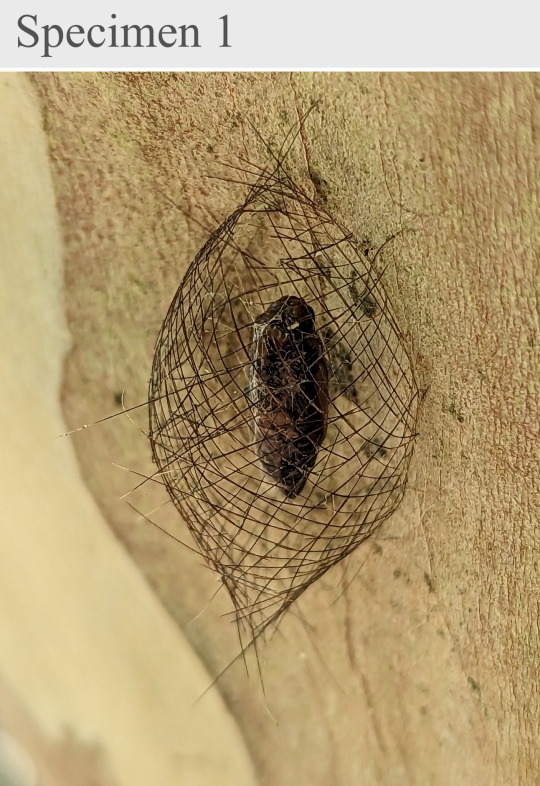
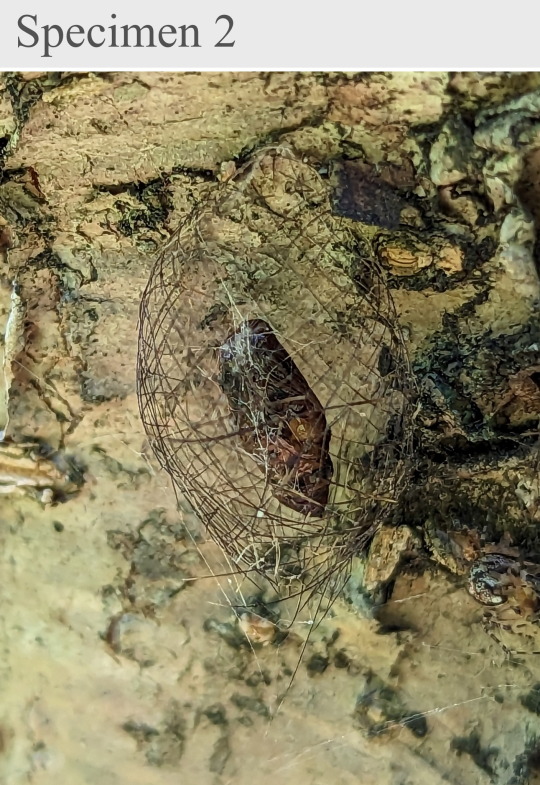
Cyana meyricki Cocoons
More info on cocoon creation here
Cyana meyricki
18/03/23
#Cyana meyricki#Lithosiini#Lichen Moths#Arctiinae#Noctuoidea#Lepidoptera#pupae#cocoons & cases#structures#Lepidopterology#invertblr#invertebrates#Arthropods#Arthropoda#bugs#bugblr#bugs tw#bug#insects#insecta#insectblr#insects tw#entomology
75 notes
·
View notes
Photo
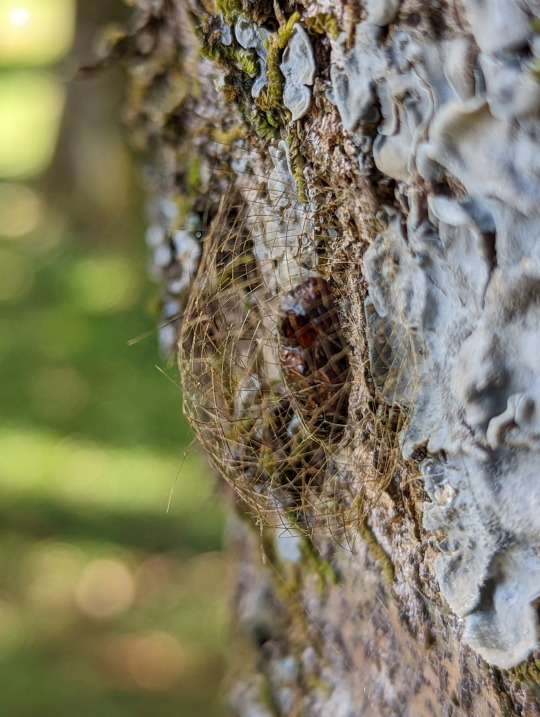

Cyana Meyricki Cage Cocoon
I’ve come across these cocoons before, here.
This one’s been parasitized, based on the large circular hole in the pupae.
Cyana meyricki
01/06/22
#cyana meyricki#Cyana#Exotrocha#Nudariina#Lithosiini#lichen moths#pupae#cocoons & cases#Arctiinae#Erebidae#insect structures#Noctuoidea#Lepidoptera#parasitism#dead#insecta#Arthropods#Arthropoda#bugblr#bugs#bugs tw#bug#insects#insectblr#insect#insects tw#entomology#nature
6 notes
·
View notes
Photo

Pupae defense of Schistophleps albida
Unlike the intricately crafted cage cocoons of Cyana meyricki, this species ops to just standing hairs on their end around the cocoon.
Much like sharpened wooden stakes.
Schistophleps albida
06/07/22
#Schistophleps albida#Lithosiini#lichen moths#Lepidoptera#Arctiinae#Noctuoidea#pupae#pupa#cocoon#invertblr#invertebrates#Arthropods#Arthropoda#nature#insectblr#bugblr#insects#insecta#insect#insects tw#bugs#bug#entomology
13 notes
·
View notes
Photo
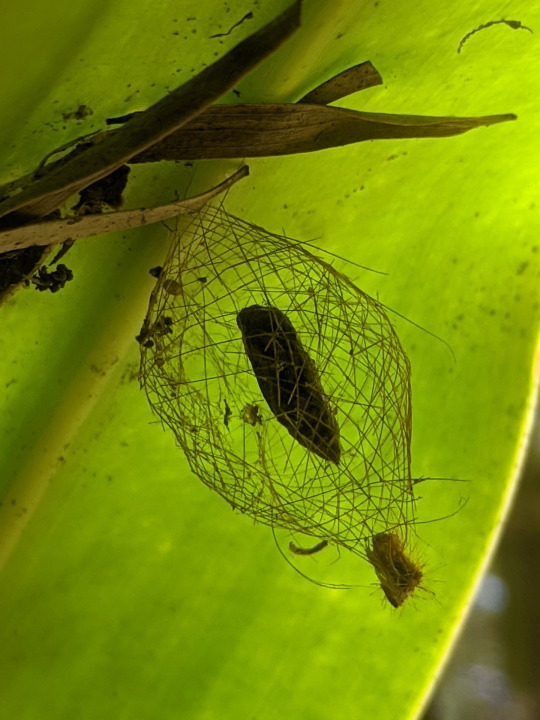
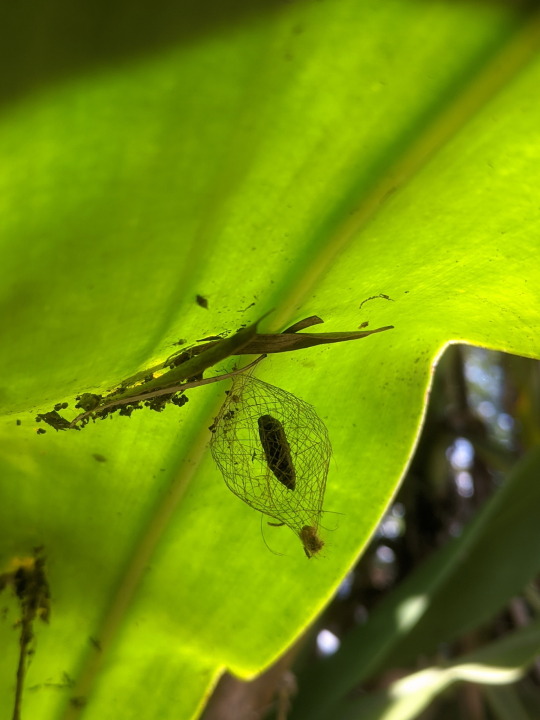
(Note from 04/09/22 - Contains outdated information)
Lepidoptera Study - 09/01/21
The pupae of Cyana meyricki.
This is not the only pupae of its kind! Lithosiinae (Lichen Moths), in general, have pupae that look like this.
This particular species makes its little cage out of its own hair, sticking it all together with silk! Even more peculiar, is that the caterpillar’s hairs are not long enough to form a cage, so it has to stick hairs together, forming a long cage bar.
When the pupae forms, it sits in the center, presumably held up by silk or hair. The dead caterpillar skin is then somehow removed from the cage, though the specimen above just has it as cork. And then finally, when the moth emerges, it leaves the cage without damaging it.
I am DESPERATE for footage of the caterpillar forming its cage... It’s one of those things I wish to see before I die (though I’ll probably be able to see everything when I’m dead, so maybe that’s irrelevant).
If I do start a little caterpillar farm, I definitely want breed some of these boys, and film their cocoon making ♥
Source + More species info
#Cyana meyricki#endnote#study#lepidoptera#lepidopterophobia#Entomology#bugs#bugblr#bugs tw#caterpillar#caterpillars#pupae#pupal stage#chrysalis#cocoon#cocoons#insecta#insects#insects tw#insect#insectblr#Lithosiinae#lichen moths#moths#moth#mothblr#arthropods#arthropoda
68 notes
·
View notes